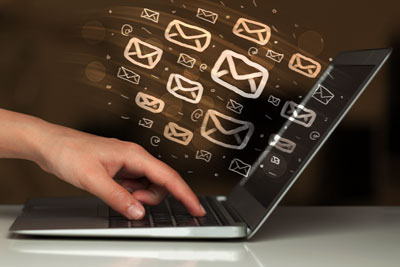
Email Management Should be Top Productivity and Security Priorities
Junk email, or SPAM, is a source of irritation for anyone with a clogged inbox. Even worse, user-level email management kills employee productivity, and poorly tended mailboxes are a popular vector for security threats. If you crunch the numbers, businesses can squander tens of thousands of dollars annually to lost productivity, while malware lurks in unfiltered junk mail. Most companies don’t realize how much productivity is lost from employees filtering through junk mail every day. With a business-critical mail system, inefficient email management costs time, money, and is potentially dangerous. Most organizations don’t have formalized training or policies in place on how to properly use email. Meanwhile, users and IT staff are reliant on the marginal SPAM filters and junk mail settings that come with popular email clients.
Lost Time and Increased Risk
A lack of sophisticated SPAM-filtering combined with insufficient training in email management leads to a lot of wasted hours. If users spend just 10 minutes a day reviewing unwanted messages, it adds up to nearly a full week of lost productivity in a year. Multiply that time by the number of employees and it adds up to a hefty hidden expense that most executives never think about. Research released last year by Menlo Park, a California-based staffing firm found that 17% of the time people spend at work is wasted on email. More significant are the security ramifications. Often, SPAM tries to get employees to open malicious attachments to spread viruses and malware, or click on links that are part of a phishing campaign. Research released in early 2016 from Mimecast found that 64% of IT security professionals rate email as a major cybersecurity threat to the enterprise, and 65% believe they are unprepared or don’t have the tools to counter such threats. The cyber threats may not even be obvious. Often, malware via an attachment can lurk in a network for months, gaining increased levels of access and steadily leaking proprietary corporate information.
Be a Better Email Manager
Even without the SPAM, tending to email can be like drinking from a fire hose, but there are ways to reduce the amount of time wasted in the inbox.
- Send less email: When you send an email, there’s a good chance you’re looking to get a reply. And if you “cc” others to keep them in the loop, that increases the chance of more replies. Part of effective email usage is realizing you don’t have to respond to everything.
- One minute reply rule: If you can reply to an email in a minute, do so and file it. Otherwise, the replies add up, which can create a marathon of email management sessions.
- Schedule inbox time: The “e” in email is for “electronic,” not “emergency.” Distraction is a productivity killer. If your email client is open and sending notifications as each new message arrives, it will be hard to focus. Only open up your email at scheduled intervals to devote time to proper email management.
- Know your email client: Whether it’s Outlook or Gmail, there are features to help you organize email and understand what’s SPAM. Your IT department will likely have a cheat sheet available, and there are a number of good online tutorials to refer to.
- Pause before you click: Take a look at where the email is coming from. Do you have an account with that bank? Would Netflix contact you at work to update your payment method? Why is accounting sending you a zip file?
- Follow the rules: If your IT department has deployed technology to secure email, don’t fiddle with it or interrupt while it’s updating.
For employees wanting to get a handle on their inbox and not wanting to be the cause of a security breach, it’s ultimately about establishing good habits and routines.
Build a Better Email Program
Effective email management is not only the employee’s responsibility. Organizations need to foster a culture of best practices and invest in technologies that favor productivity and ensure security.
- Standardize: Everyone in the organization should be running the same email client, ideally on both their PCs and mobile devices.
- Educate: Implement training in conjunction with IT and possibly HR to impart best practices for email management, not just from a productivity perspective, but from a security perspective. This should be part of your new-hire orientation process as well.
- Set the ground rules: Have policies in place for all employees, and make sure they are widely distributed and understood.
- Centralize SPAM filtering: Invest in centralized technology specifically designed to deal with unwanted email, ideally in a scalable Platform-as-a-Service (PaaS) model. These are affordable solutions for the value they deliver.
Email management occurs both at corporate and the end-user levels and unmanaged SPAM should not be dismissed as “just the way it is.” Ignoring it becomes a productivity killer and if left solely to employees can lead to preventable security threats. Technology and training can help safeguard your data and infrastructure and give back valuable working time to employees.
Subscribe to Cartika
Receive a coupon code for 99% off your first month of services immediately after completing the form below!

